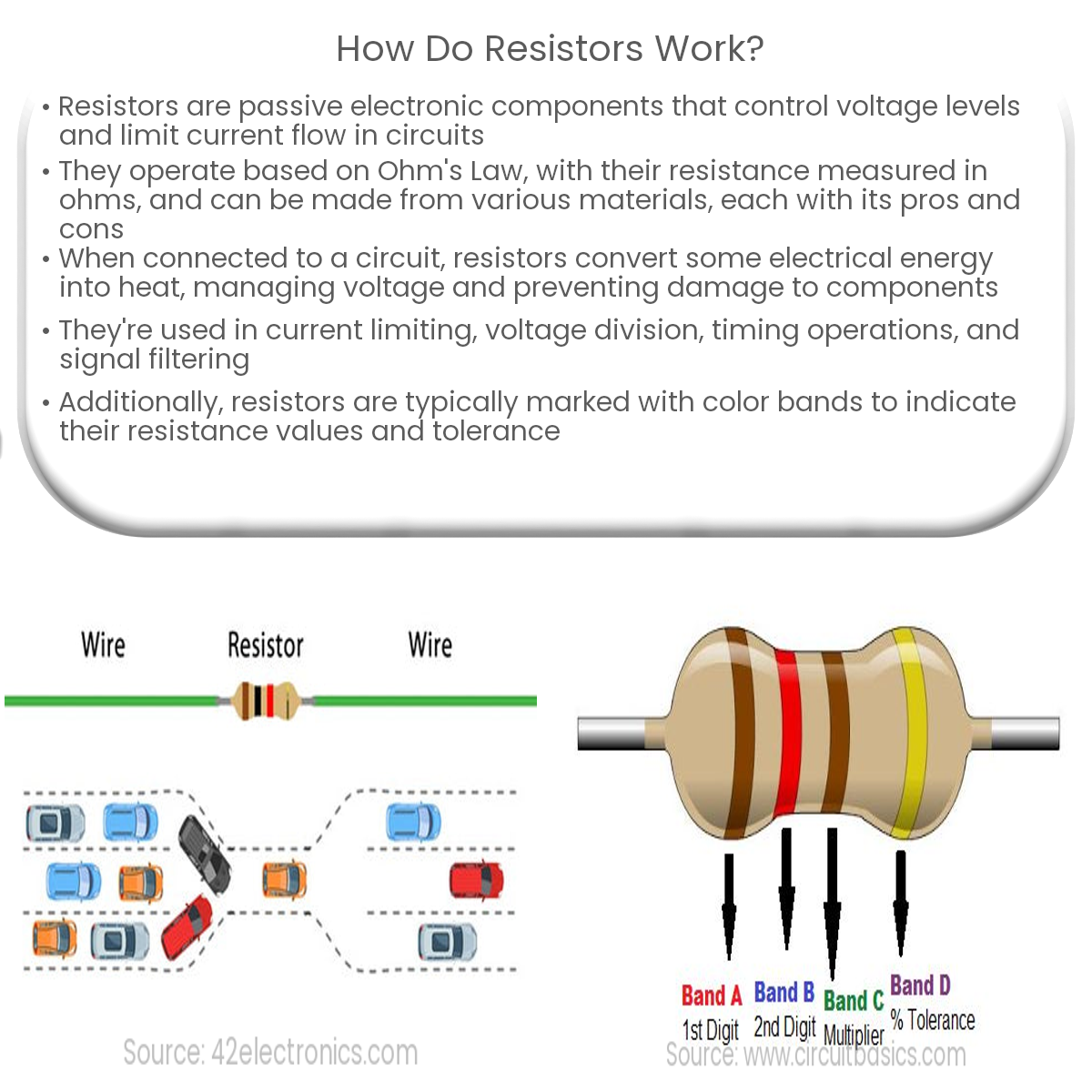Resistors impede current flow, converting electrical energy into heat, allowing control of voltage levels, current limiting, filtering, and timing.
Understanding Resistors
Resistors are passive electronic components that impede the flow of electric current in a circuit. They’re used to control voltage levels, limit current flow, and perform various other tasks like filtering and timing.
Resistance and Ohm’s Law
Resistance is a measure of how much a resistor hinders the flow of electric current. It is measured in ohms (Ω) and is governed by Ohm’s Law, which states that the voltage across a resistor (V) is equal to the product of the current flowing through it (I) and its resistance (R): V = IR. This relationship shows that the current flow in a circuit is directly proportional to the voltage and inversely proportional to the resistance.
Resistor Construction
Resistors can be made from various materials, including carbon, metal film, wirewound, and thick or thin film. Each type has its advantages and disadvantages in terms of precision, temperature coefficient, and power handling capabilities. Resistors also come in various shapes and sizes, such as axial lead, surface mount, and chip resistors.
How Resistors Work in a Circuit
When a resistor is connected to a circuit, it reduces the flow of electric current by converting some of the electrical energy into heat. The amount of heat generated depends on the resistance value and the current passing through it. This energy conversion is crucial for managing voltage levels and preventing damage to sensitive components in a circuit.
- Current Limiting: Resistors are used to limit the current flowing through a circuit, protecting components from damage due to excessive current.
- Voltage Division: In a voltage divider configuration, resistors are used to divide voltage across multiple components, providing specific voltage levels required for proper operation.
- Timing: Resistors can be combined with capacitors to create RC (resistor-capacitor) circuits, which are used to create delays and time-based operations in electronic systems.
- Filtering: Resistors can be used alongside capacitors or inductors to create filters that block or allow specific frequency ranges, shaping the signal in a desired manner.
Resistor Color Codes and Values
Resistors typically have color bands printed on their bodies, indicating their resistance values and tolerance. The color bands follow a standardized code that helps users identify the resistance value quickly. There are online tools and charts available to help interpret these color codes.
In conclusion, resistors are fundamental components in electronic circuits that control voltage levels and limit current flow. Understanding their working principle, construction, and applications is essential for designing and troubleshooting electronic systems.


